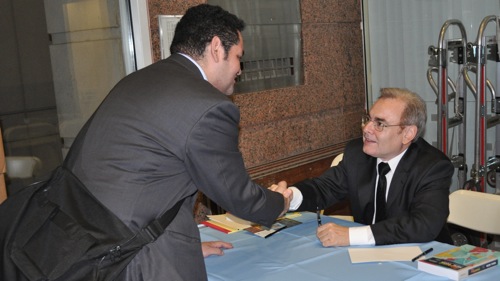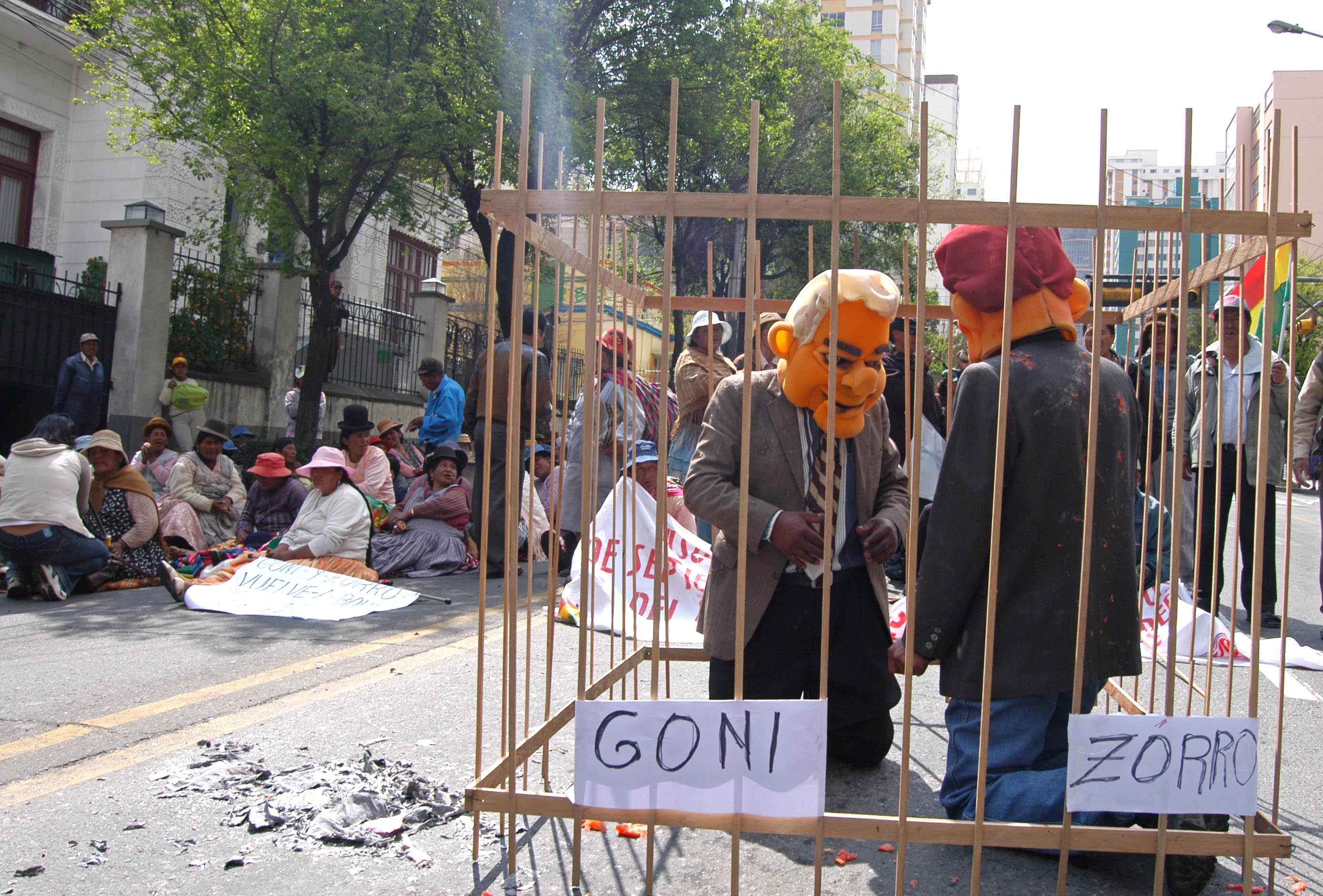
Dispatches, United States
“Hispanic New York: A Sourcebook” Traces The City’s Latin History
September 20, 2010 By Roque Planas

Claudio Remeseira, editor of "Hispanic New York: A Sourcebook," signed books at the launch last week. Photo by Roque Planas.
NEW YORK — In 1934, the classic tango artist Carlos Gardel premiered his film “Cuesta Abajo” in the Campo Amor theater in Harlem, before an audience of 3,000 – a tremendous success for the time.
While thinking about Latino culture in New York doesn’t necessarily evoke images of famous Argentines, Gardel lived the last year and a half of his life here in the city, where some of his films were shot.
Gardel’s story is one of the lesser known facets of Latino history in New York detailed in the new book “Hispanic New York: A Sourcebook,” which was launched last week at an event in Columbia University to commemorate Hispanic Heritage Month.
According to the editor, Claudio Remeseira, the purpose of the book is to bring readers basic documents, some of which are hard to find, that show the long history and diversity of the Latino experience in New York.
The idea to do the book evolved out of a class Remeseira teaches about Hispanic history in New York at Columbia University. For the class, Remeseira compiles a documentary reader.
The first person in New York that would today be considered “Hispanic” was Juan Rodríguez, a free mulatto from the island of Hispaniola – the site of contemporary Haiti and the Dominican Republic. Rodríguez arrived in Manhattan in the early sixteenth century, preceding not only the Anglo-Saxon presence in Manhattan, but also Dutch colonization.
The Latino presence remained a constant over the years. The nineteenth-century poet Walt Whitman praised the city’s Hispanic presence and admired the sound of the Spanish language, according to contributor Paul Berman. New York was the site where Cuban intellectual and independence leader José Martí wrote his famous criticisms of the colonial regime and, ironically, warned that Latin America should be cautious of falling into a subordinate relationship with the United States.
While New York has always counted Hispanics among it’s residents, the year 1990 marked a transition, according to historian Gabriel Haslip-Viera. At that point, immigrants from Mexico and Central America began to arrive “in truly unprecedented numbers,” Haslip-Viera said at last week’s launch.
Today Hispanics make up nearly one third of the city’s population.
It is not just the size, but also diversity that marks New York’s Hispanic community. Unlike areas where immigrants have typically arrived largely from a single country — such as the Cuban-American community of south Florida or the Mexican-American communities of the southwest — in New York City, no one group can claim dominance.
According to the authors, this has led to a situation in which Latinos in New York forge a common identity and deemphasize national differences.
Professor of Latin American studies at City University of New York Milagros Ricourt described experiencing this characteristic when doing her doctoral research in the neighborhood of Corona, Queens, 24 years ago.
“I really wanted to go and study Dominicans, but I couldn’t,” Ricourt said. “I couldn’t extract Dominicans from the rest of the (Latino) community.”
Latinos aren’t necessarily easy to separate from the non-Hispanic American population, either, according to Remeseira. A central contribution of the book, he said, is “to show that our Hispanic culture is an integral part of the culture of the United States, not a foreign addition.”
< Previous Article
September 20, 2010 > Roque Planas
Cuban Musician Cachao Featured On PBS “American Masters” Series
Next Article >





1 Comment
[…] A new book launched last week traces the history of New York City’s Hispanic community. Roque Planas reports. […]
Comments are closed.